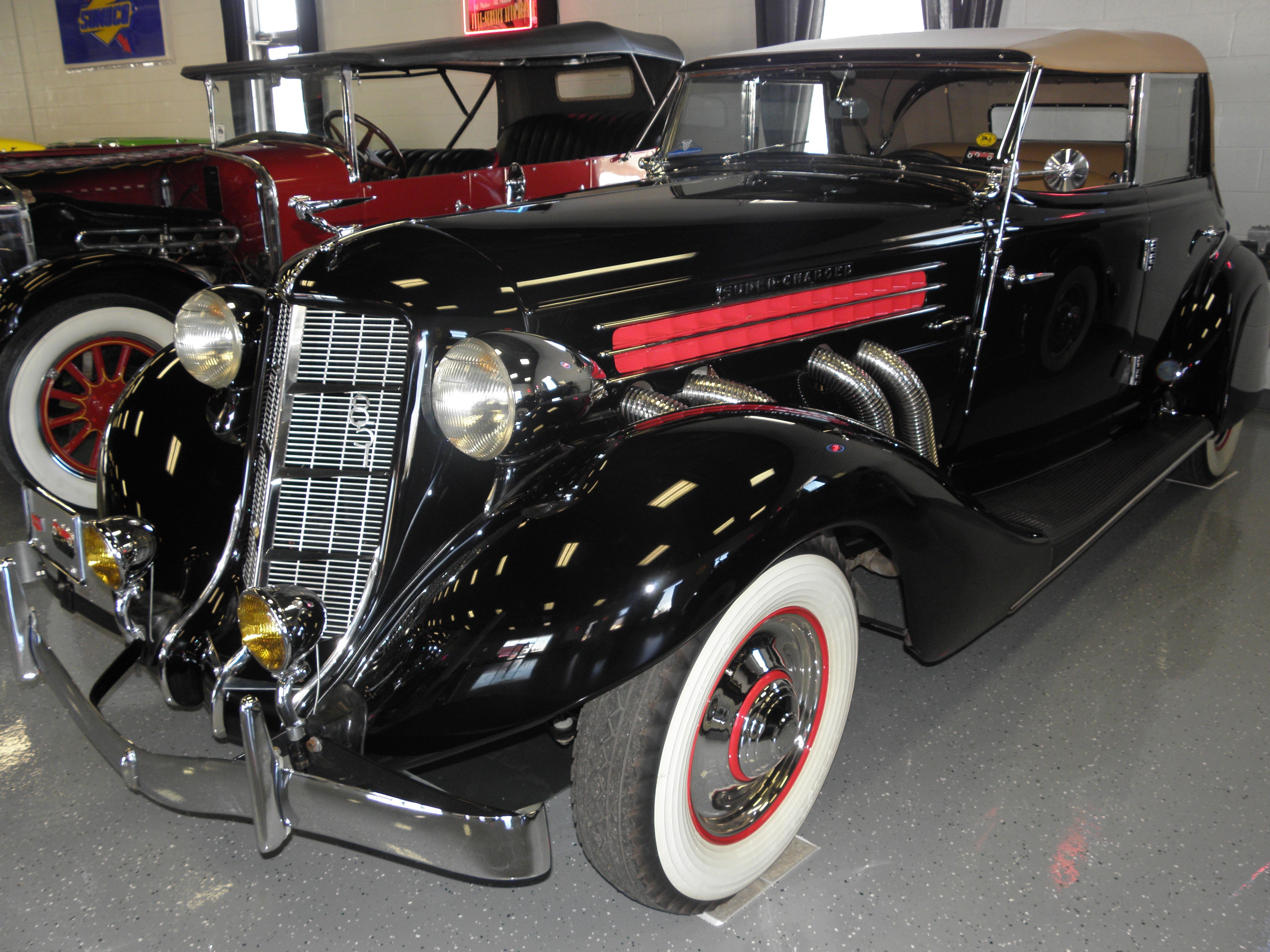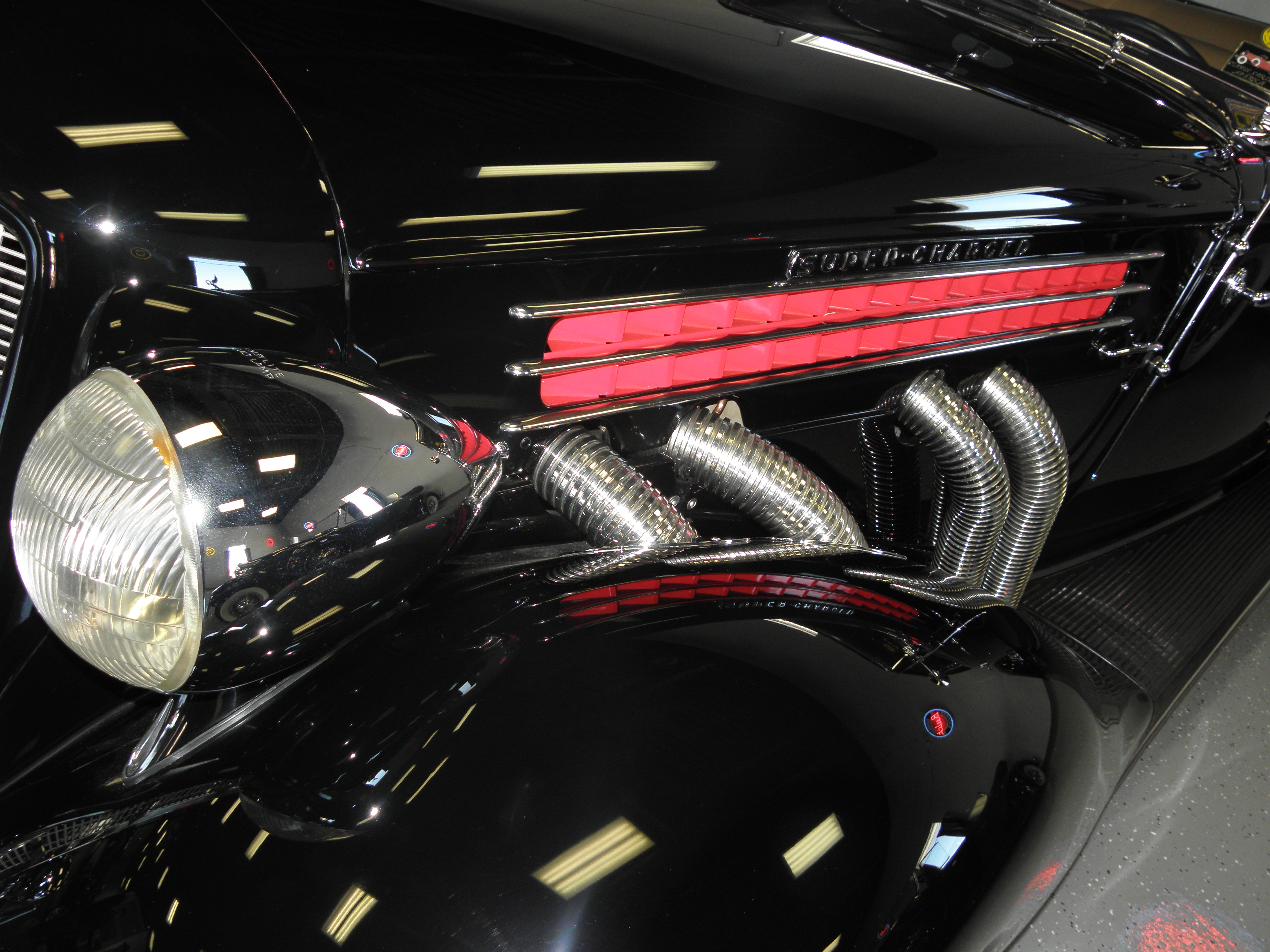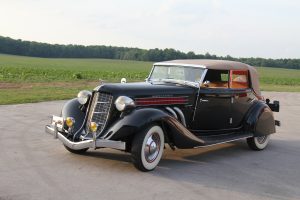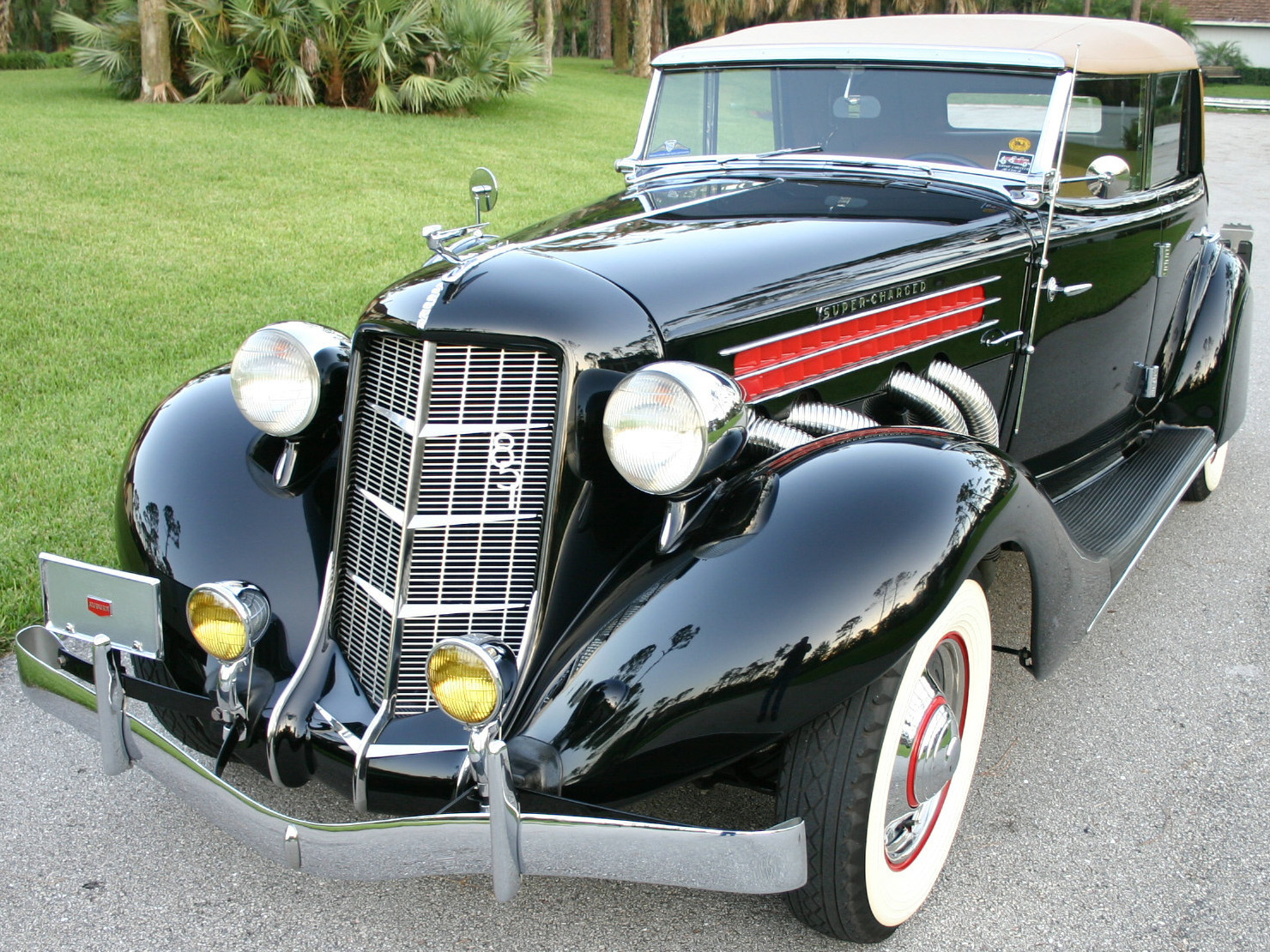Auburn
1935 AUBURN SUPERCHARGED 851SC CONVERTIBLE SEDAN NO 12
- Three-speed manual transmission.
- Super Charged 280 cid, 150 hp.
- Dual Ratio Columbia rear axle.
For 1935, Auburn pulled out all stops. A mild restyle freshened the cars’ appearance, and a new supercharged speedster, designed by Gordon Buehrig, became the flagship car.
This Auburn 851 is the desirable Supercharged Convertible Sedan, equipped with Dual Ratio Columbia rear axle and a passenger side-mounted spare tire. Under the hood is the 280-cid, 150-hp Lycoming inline eight-cylinder engine that is receiving extra power from a Schwitzer-Cummings supercharger. The famous driver, Ab Jenkins, set a world record driving an 851 at an average speed of 100 miles per hour for a 12 hour period.
The Auburn features many beautiful styling features such as an elegant damascene dashboard, chrome bullet-shaped head and taillights. The 1935 Auburn 851 family of automobiles (the Convertible, Phaeton, and Speedster) were owned and driven by many luminaries of the period including Hollywood stars such as Mary Astor, George Murphy, and Marlene Dietrich.
Auburn-Cord-Duesenberg (ACD)
1925-1937
Like many of the early automakers, Auburn started in 1874 as a carriage maker. The first Auburn automobile for sale was a single cylinder, chain driven vehicle with air-filled tires in 1903. Auburn persevered making a solid line of cars surviving business up and downs but profits never measured up to expectation. In 1925 Erret Lobban Cord (1894-1974) bought the company in a leveraged buyout. With-in two years Cord doubled and then tripled sales making the Auburn Co. profitable by 1926.
The first Duesenberg was made by brothers Augie and Fred Duesenberg in St. Paul MN in 1913 before moving the operation to Indianapolis IN. Although they were great engineers the brothers had no business sense and by the mid-Twenties the company was in receivership. Cord bought Duesenberg in 1925 retaining the brothers to build the biggest, most powerful, most expensive car of the era. These `Duesey’s’ won the Indianapolis 500 in 1924, 1925, and 1927. Cord later hired Gordon Buehrig (1904-1990) to be his chief designer. Buehrig designed the coachwork for over half of the legendary Model J Duesenberg line (1928 -1937).
To round out the companies offerings, Cord had Gordon Buehrig re-design the 1935 Auburn 851 SC series seen here as an integral part of the Lang Collection. This car had a super-charged (SC) Lycoming 8 cylinder engine and a stand alone design. The factory guaranteed the car to be able to exceed 100 mph while carrying the driver in comfort and relative safety.
Never one to not to blow his own horn, Cord commissioned Buehrig to design a line of cars to be marketed in his own name: Cord. Known as “little Duesenbergs,” the Cord was the world’s first front wheel drive car. As far as the Cord brand is concerned the design pinnacle was Buehrig’s 810/812 Cord of 1936-7 often known as “the “coffin nosed Cord.” There were many reliability concerns with this car but its clean timeless design was well received then and is to this day.
Unlike General Motors, Packard and Chrysler, Cord continued selling only to the affluent few. As a result he had no other earning assets to maintain his balance sheet and his products proved too expensive for Depression era markets. The money dried up. Finally, convicted for securities fraud in 1937, E. L. Cord was forced to sell his interest in the corporation and the production of these three legendary name plates came to an end.
- L. Cord went on to become a millionaire many times over in California and Nevada real estate and owned several radio and television stations.
Buehrig later joined Ford to design, among others, the classic `51 Victoria Coupe, the beautiful `56 Continental Mark II, the hard-top convertible (see the Lang Collection’s `57 Fairlane 500 and `59 Ford Galaxie Skyliner), and patented the removable T-Top later found on the 1968 Corvette among others. He was elected to the Automotive Hall of Fame in 1989. It was an honor well earned and deserved. Gordon Buehrig considered himself “an automobile architect and sculptor” and indeed he did design works of art!




